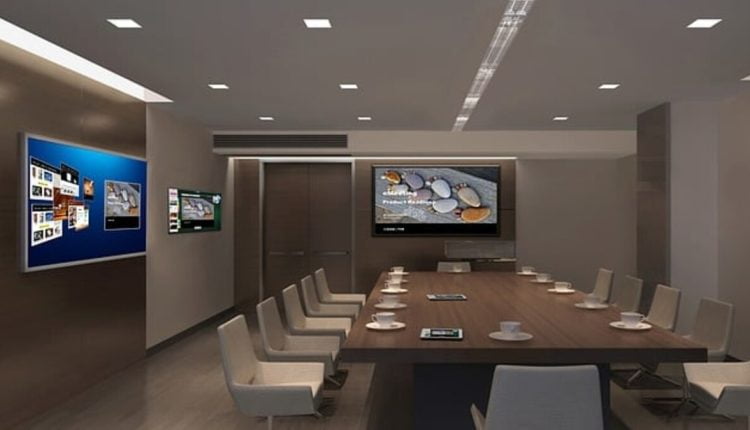If you want things to look friendly and organized after you’ve mounted the LCD TV, you might want to hide the audio/video cables and power cord. You can conceal your cable box behind several wall mounts. The majority of households opt to conceal their wiring within the wall. Covers for wires are available with a powerful adhesive that may secure them to the wall. The wire covers can be painted to match the wall, so they are barely noticeable. You may need to purchase a new wall mount for your TV in addition to the one included in the box if the two are not compatible. If you want to avoid the hassle of buying new wall brackets for your TV every time you upgrade, consider using a universal mount.
The TV bracket requires two bolts, four lock washers, and two nuts to secure horizontal support to a wall-angle module. Each nut and bolt should have a lock washer next to them to prevent the bolts from breaking loose. Put the Allen wrench into the hole in the bolt’s head and the open end of the wrench onto the nut to tighten it. Repeat for the remaining corners, taking care that the slots in the mounting holes of both wall angle modules point downward. Before mounting the TV wall bracket, check the floor for potential hazards or breakables. The TV could fall off the wall brackets and cause harm to the area below it, regardless of how carefully you mount it.
The studs in a home are consistently spaced at uniform intervals determined by the architect. Finding the other studs may be simple after you’ve found one. Make your life easier by using a stud finder. Make sure the TV bracket is straight and level with the help of a level. TV wall brackets come in various sizes, so you should be able to find one that works with the space between your studs. By fastening the TV bracket to the studs, you can rest assured that it will hold the TV firmly in place. Note where you want to drill the eight holes for the lag bolts. Drill tiny holes in the designated spots with the electric drill. Holes drilled for bolts should be slightly smaller in diameter. Each of the eight screws should be securely seated in the studs’ center holes. Attach the TV brackets to the wall by placing them over the holes with the flat sides towards the wall.
Related Posts
LCD TV bracket installation on a brick or concrete wall is very comparable. You will use cement anchors instead of lag bolts to secure the TV wall brackets to the concrete wall. Keep your holes at least two inches away from any mortar joints. Holes near a joint increase the risk of the anchors coming free. Set the anchors in place by inserting them into the holes and pounding on them using a concrete anchor tool. Make sure everything is fastened correctly and not going anywhere. Pulling gently on the brackets is an excellent way to test your installation and see if anything seems loose.
To install an LCD TV on the wall, you’ll need at least two people to keep it steady. Depending on its dimensions, a flat-panel television set can weigh quite a bit. There may be holes and bolts on the TV wall mount that allow you to tilt the TV to a specific degree. If the TV is to hang level, you must ensure that the holes and bolts on both sides of the mount are aligned at the same angle. After the angle has been set, all the fasteners that should be permanent and unmovable should be tightened. Always double-check the tightness of your nuts and screws.
BracketHub is one of the UK’s significant suppliers of TV wall Brackets [http://brackethub.co.uk], with a focus on Plasma, LED, and LCD TV Brackets [http://brackethub.co.uk] for use with AV equipment.
Read also: How to Avoid Falling Victim to Different Ransomware Schemes.


